An introduction
Hi everyone,
I'm looking forward checking out if Steemit will be a good place to share my travel experiences and support my photography.
Instead of writing about myself I decided that I will post an interview with me here. I think it tell a lot about myself and what I'm doing. It was originally published by workshopx some time ago. I hope you will enjoy it :-)
*********
There is no such a thing as objectivity. Neither in photography nor in journalism. In order to be a good story teller, one has to have it’s own stand. A strong one – says Aleksander Bochenek, a photographer who was interviewed by Simone Kussatz.
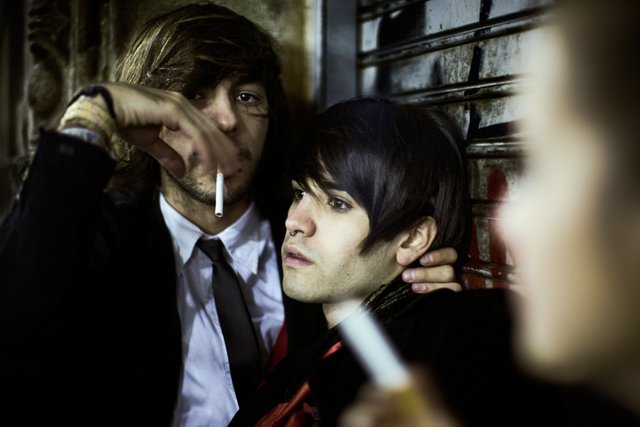
Simone Kussatz: What made you decide to choose photojournalism over fine art photography, or do you consider them to be one and the same thing? I’m thinking of the works of Dorothea Lange and Steve McCurry, whose work has been shown in art galleries and museums?
Aleksander Bochenek: I never had to make such a choice. I got into documentary photography quite naturally. Documentary photography can be considered art, of course, and those creators who fit the current trends are displayed in museums. This classification isn’t of big importance for me. What counts is the photographer’s statement that takes form of the picture. The voice that appeal to me or not.
SK: In your biography you mentioned that you’re interested in social injustice, the moral condition of humanity and religion. Why?
AB: I’ve witnessed equally many beautiful and utterly disturbing things during my everyday life in Poland and in my extensive traveling during the last decade. I’m very interested in human nature and in trying to figure out how the world works. Photography is rather a ploy. I realized that the essence of life lies in its nature of dynamic change and vibrancy – not in the goodness and illusion of safety, like the naïve, childish vision I used to have.
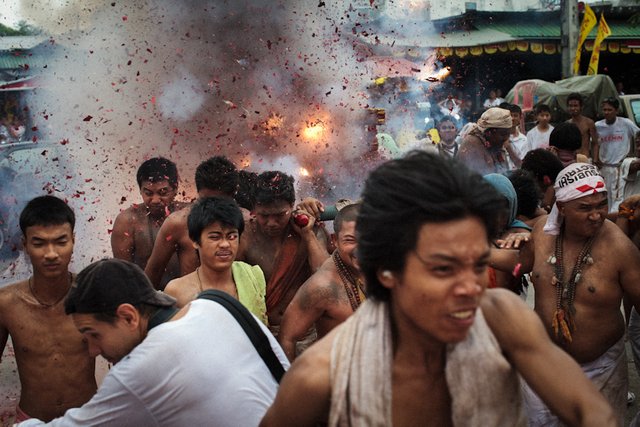
SK: How does religion play a part in your life?
AB: I was brought up in a secular family. I’m somewhere half way between agnosticism and atheism, yet I’m interested in different religions and their role both for society and the individual. Why do religions and ideologies have such a great power? Is it merely an overused tool to govern and to impose particular ideas? Or could it perhaps be something much more complex and deep?
SK: You live in Krakow, Poland, but also lived and studied in Tokyo, Japan and Barcelona, Spain. How do these different cultural experiences reflect thematically in your work?
AB: I’m a different person in every one of these places: Krakow, Barcelona, Tokyo and Kolkata. After a while, the places in which you live determine you in many ways. And so were the different photographic topics I chose, but they are always about people. In Barcelona, I attempted to portray the atmosphere of El Raval, a peculiar and once notorious district called Bario Cino. I stayed there for one year. In Krakow, I worked on a project about the human influence over the environment. In Kolkata, I focused entirely on documenting everyday life by photographing one of the families living there. So far, I’ve visited about 40 countries. The more I see, the less amazed I become by exoticism, but it is a significant benefit of traveling.
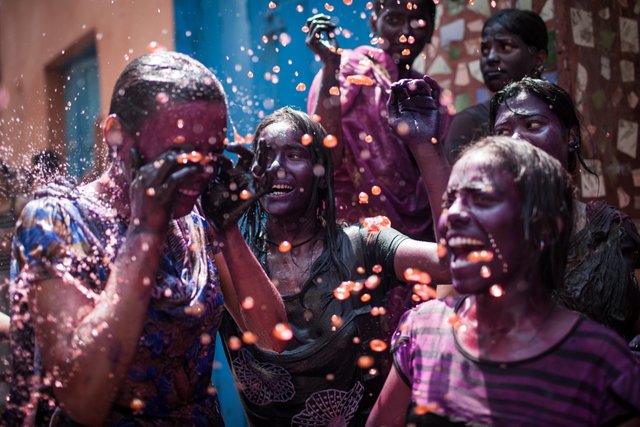
SK: In your series “I love my Sudder Street” – a series of photographs taken in the center of Kolkata – you said that this project was about trying to find out how people can fully embrace life despite all their obstacles in their way. Can you tell me more about it?
AB: I started this project in 2009 when I visited Kolkata for the first time. There I met Roshni (she was 12 years old back then) and her large family. I was curious to get to know them, so I just stayed with them, talked and took a lot of pictures. At first I didn’t even think of it as a photographic project at all. Then the friendship became so important and meaningful to me that I decided to go back there regularly. My passport has since then gained 4 Indian visas and I’m waiting for the fifth one now. Roshni has eight siblings. The family stays in a shabby, rented room, which measures only 5 by 5 meters (16 by 16 feet), in the center of the city. It’s not rare that as many as 15 people (her family plus relatives) stay there for a night. Women sleep on the bed, and the men surround them, sleeping in a tight circle on the floor. There is no place for privacy, nor a possibility for basic hygiene; any European would call their improvised bathroom a ditch. Roshni, who contracted brain malaria last year, would tell you about her illness with a striking smile on her face. And although these are often unbearable conditions, I’ve never met people with such a zest for life, a build-in energy and enthusiasm. I wonder, how is this possible? Most tourists, who go to Kolkata would call it Hell on Earth, the worst of the worst. Yet, when you come across someone like Roshni and her sisters and brothers, one starts to wonder what’s really important in life.
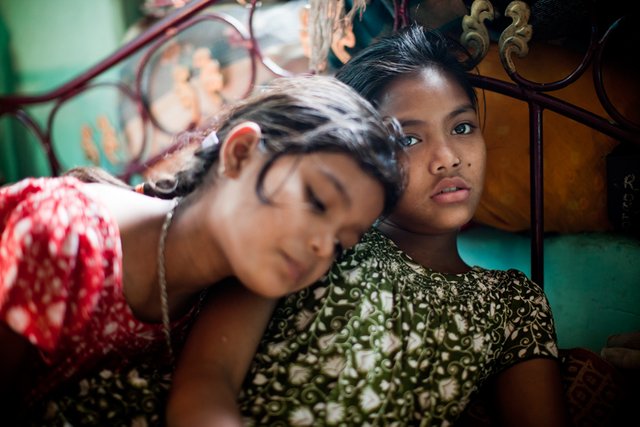
SK: You mentioned that Roshni, the girl that you photographed in Kolkata, said that she was happy where she lived and didn’t want to live anywhere else. What do you think kept her happy in these (by our standard) poor living conditions?
AB: One day I asked Roshni, if she would like to move to some other place in the future. She looked around and said, “No, I really like it where I live. I have my family here, everyone in the neighborhood knows me, and we have a lot of fun every day. I love my Sudder Street.”
SK: “I love my Sudder Street” is a long-term project. What will be your next step with it?
AB: I’ll exhibit it and hopefully publish a photo book. For now, the project is far from being complete so I don’t think much about the next step.
SK: Your portfolio includes some distressing pictures. I’m thinking of the group of men with blood all over their faces, or blood running down the stairs. What’s the story behind these photos?
AB: It’s part of a report I did in southern Lebanon about Ashura, an Islamic religious ritual. Every year thousands of people gather there to take part in “bloody” Ashura, which is forbidden in other places in the country. An-Nabatiyah, a town located 10 km from the Israeli border, is one of the few places in the world where Ashura celebrations are still conducted in the so-called „traditional” way, which includes self-injury. Men emulate the suffering of the prophet Husain by whipping themselves with chains and cutting their foreheads with razors. Young boys, often as young as two or three years old, are also cut, though lightly. It is believed that by doing so, chances for salvation are increased and that children’s illnesses might be cured. I went there to photograph Ashura in 2008 and 2009
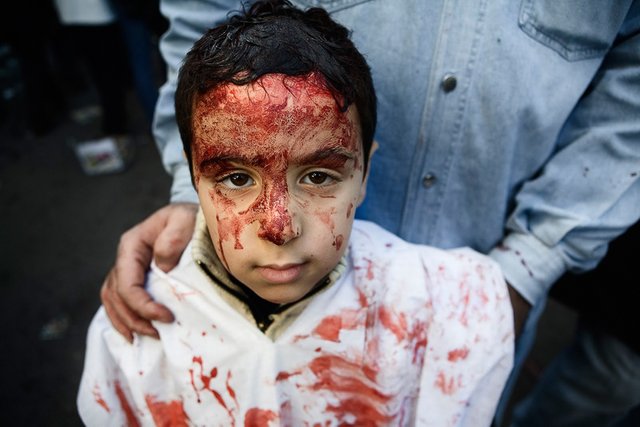
SK: Thinking of Kolkata and Tokyo, what are the most cultural differences and similarities?
AB: Those two are different universes. In Kolkata you meet astonished Japanese tourists. The city is so exotic to them. Of course, Japan is extremely clean and orderly, while Kolkata is chaotic, noisy, and polluted. The Japanese stand about 1,5 meters (about 5 feet) away from you when speaking face-to-face, while Kolkatians would stand way too close for average Westerners. The economic gap between the two is huge and that creates further discrepancies. In Kolkata the bars, shops, and going out is only for the affluent few while most of the population still lives in extreme poverty. There is not much room for culture, if you’re struggling for survival. Perhaps what’s similar between the two is the lack of space and privacy, and that both cultures are made of hard working people. In general, however, I don’t think I’m in the position to talk wisely about these two different cultures. One needs to spend years in one place and read many books to be an expert on the topic. I’m still experiencing both cultures on a superficial level. If you asked me the same question in a couple of years, I might have a better answer for you.
SK: What makes a good photojournalist in your opinion?
AB: Not just merely reporting the facts; that’s only touching on the surface of things. A good photojournalist is able to go deeper into the subject matter and penetrate the viewer’s emotional sphere, which in turn stimulates intellect. Also, constant learning, an open mindset, the willingness to understand, empathy, not being judgmental, those characteristics must be cultivated in order to be a good photojournalist. There is no such a thing as objectivity, neither in photography nor in journalism. In order to be a good story teller, one has to have one’s own stand. A strong one.
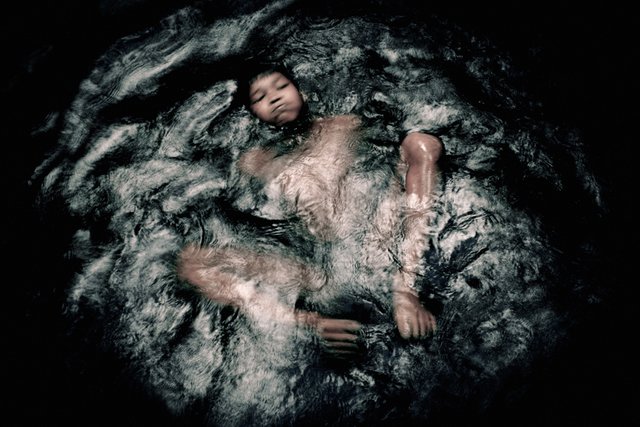
SK: As far as the technical aspect of your work, what kind of cameras are you using?
AB: I use both film and digital, 35mm and medium format. For local projects I use film. When I travel I prefer using digital, because you want to carry as little on you as possible. Other than that, good DSLR, one or two lenses, and good data storage does the job.
SK: Do you develop your pictures yourself and do you have a preference for any particular kind of film?
AB: I develop my films in labs. I never got fascinated with the darkroom and chemicals. For now I scan the films and do the post-processing digitally after. As for now, being out there, participating and shooting are the most important things for me. However, when I get older and possibly have more patience, I might build my own darkroom. I have plenty of new things yet to discover.
SK: Thank you for our conversation!
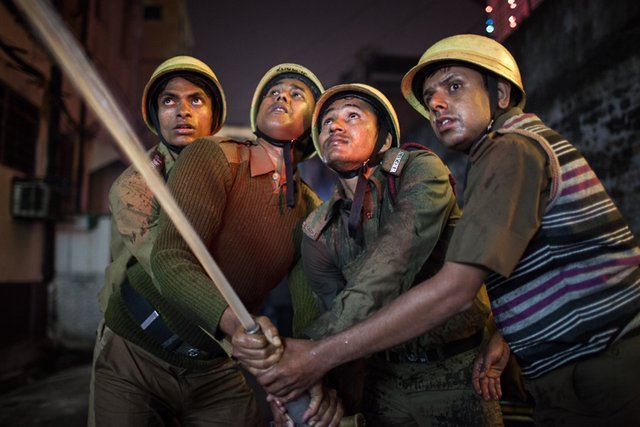
Text copyright: © Simone Kussatz
Text edited by: Simone Kussatz & Marta Kos
Re-posting: courtesy of Simone Kussatz
Photographs: © Aleksander Bochenek
Great post well done
Thank you :-)
Welcome to Steemit @aaleksander!
I wish you much success and hope you find Steemit to be as rewarding and informative as I have.
Here are some links you might find useful.
Your stats on SteemNow
Your stats on SteemWorld
Your stats on SteemD
How to use Minnow Booster
How does Steemit actually work?
Introbot is hosted and managed with donations from @byColeman to help make your journey on Steemit be truly rewarding. Your feedback is always welcome so that we may improve this welcome message.
Oh yea, I have upvoted you and followed you. Many blessings from @introbot & @bycoleman
welcome aaleksander,Happy steemit
#Steemit-Indonesia
Welcome!
Congratulations @aaleksander! You have completed some achievement on Steemit and have been rewarded with new badge(s) :
Click on any badge to view your own Board of Honor on SteemitBoard.
For more information about SteemitBoard, click here
If you no longer want to receive notifications, reply to this comment with the word
STOPHey there, I'm Oatmeal Joey Arnold, and I love Japan.
Yes. Japan is a very special place on the world map.
Congratulations @aaleksander! You have completed some achievement on Steemit and have been rewarded with new badge(s) :
Click on any badge to view your own Board of Honor on SteemitBoard.
For more information about SteemitBoard, click here
If you no longer want to receive notifications, reply to this comment with the word
STOPCongratulations @aaleksander, you have decided to take the next big step with your first post! The Steem Network Team wishes you a great time among this awesome community.
The proven road to boost your personal success in this amazing Steem Network
Do you already know that awesome content will get great profits by following these simple steps, that have been worked out by experts?
Congratulations @aaleksander! You have completed some achievement on Steemit and have been rewarded with new badge(s) :
Click on any badge to view your own Board of Honor on SteemitBoard.
For more information about SteemitBoard, click here
If you no longer want to receive notifications, reply to this comment with the word
STOPGood intro